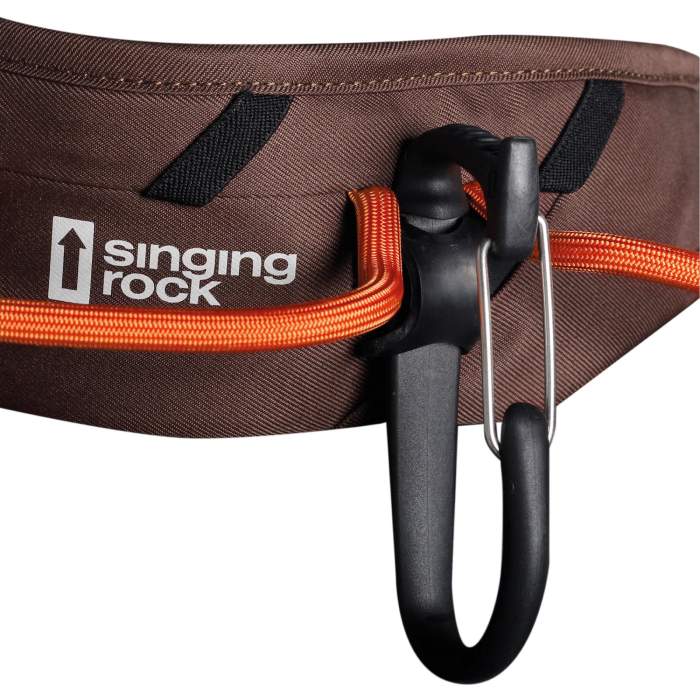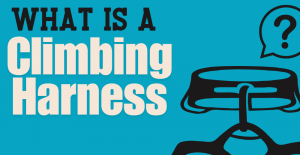How to use Singing Rock harness, storage and maintenance with instructional pictures.
Spinel
Description
Four-buckle climbing harness that you appreciate when you change your waist circumference often, for example when you change layers of clothing. Ideal companion for multi-pitches, mountaineering or winter climbing.
- 4 patented stainless steel Rock&Lock buckles allow you to adjust the harness precisely as you need it
- using two buckles on the waist belt you can easily centre it so the gear loops always stay in the optimal position
- thanks to Rock&Lock buckles on the leg loops you can put the harness on without having to take your skis or crampons off
- for quickdraws and other equipment, you have 4 shaped gear loops with textile braiding and a load capacity of 5 kg
- harness also offers slots for 2 auxiliary plastic PORTER carabiners, into which you can clip additional material
- in the back there is a haul loop with a load capacity of 10 kg
- well thought-out design of the waist belt and leg loops, which uses 2 webbings running along the sides of the padding, distributes the load efficiently and ensures greater comfort when sitting or hanging in the harness
- EVA foam padding is covered on the inner side with a porous 3D fabric and on the upper side with a breathable fabric with high abrasion resistance
- reinforced tie-in points are a matter of course
- durable belay loop has a width of 12 mm and a strength of 15 kN
Retail price
This Product is Hard to Find.
We don’t know where you can buy this item online in the US. We’ll continue to check all the major retailers and will update this page as soon as we find one.
If you know where to find this online in the US, let us know, and we’ll add the link.
Weight (g)  WeightIn grams, the weight, as stated by the manufacturer/brand. If there are differences in weight (due to multiple sizes or optional accessories) we'll list them here. The default weight is the middle-most size, often this is size M. | 405 g |
| Fit | Unisex |
| Sizes | S, M, L, XL |
Gear Loops  Number of Gear LoopsGear loops are used to hold gear (quickdraws, cams, etc) onto your harness. 4 gear loops is most common. 
0 - 1 Gear LoopsMost often on full body harnesses or guide/gym style harnesses. 2-3 Gear LoopsMostly found on lighter harnesses made for [ski] mountaineering or high-end sport climbing where weight is a high priority. 4 - 5 Gear LoopsThe standard/most common number for climbing harnesses. Perfect for sport and trad. More Than 6 Gear LoopsDesigned for long multi-pitch and big wall climbing, found on harnesses made to hold the maximum amount of gear. Worth ConsideringOccasionally, the number of gear loops will change on a harness model depending on the size. There could be 7 gear loops for the med/large but only 5 gear loops for the xsmall/small. In this case we list the highest number for the filters, and then write an explanation on the product page like, “Size S/XS can only fit 5 gear loops.” | 4 Gear loops |
Ice Clip Slots  Ice Clip SlotIce clipper slots are made to fit a carabiner that holds ice screws. These slots are generally only used by ice climbers but there is no disadvantage to having them on your harness. 
Less than 40% of harnesses will have ice clipper slots. And those harnesses will usually have 2 or 4 slots, often located next to, or between, the gear loops. | Yes, 2 |
| Belay / Tie-In | One Loop |
| Waist Buckle Type | Quick Adjust |
| Leg Buckle Type | Quick Adjust |
| Drop Seat | Yes |
Haul Loop  Haul LoopTrad climbers often look for a haul loop as they're intended to haul a rope (second line) or pack (while you climb the chimney). 
A haul loop can also hold shoes or other accessories. Although not the intended use, it is also commonly used to hold a chalk bag. | Yes (0kN) |
| Certification | CE, EN, UIAA |
| Size Chart | |
No reviews yet.
A pictoral representation of UIAA-105 and EN-12277 standards for harnesses.
The UIAA equipment standard provides a baseline for equipment performance in a test lab under controlled conditions on new equipment. Although these test conditions are relevant to the conditions encountered climbing, conditions encountered at the crags and the condition of the equipment are equally important. This recommendation from the UIAA member federation The British Mountaineering Council (BMC) provides vital equipment information that is NOT explicitly addressed in the standard, particularly failure modes of the equipment and recommendations for the use, inspection, maintenance, and retirement of equipment.




















